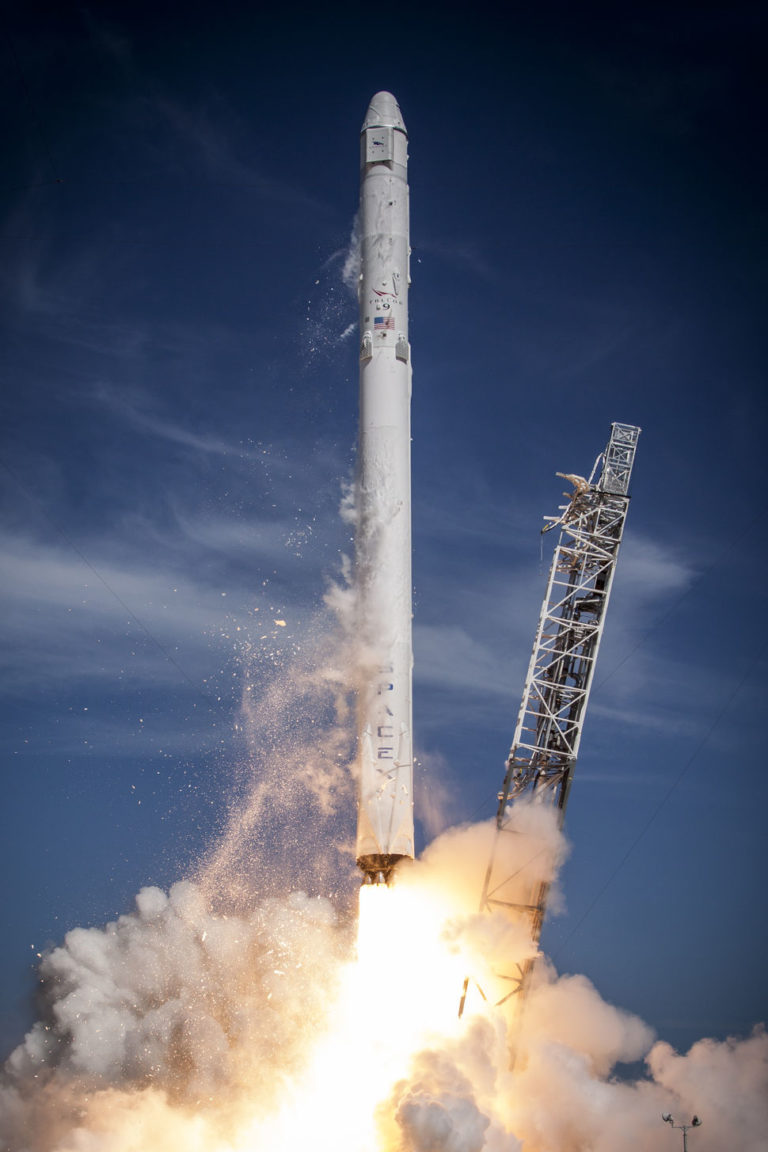
In retail, if you break it, you buy it. Liability in the space industry is not so straightforward.
Case in point: On Sept. 1, a Falcon 9 rocket of Space Exploration Technologies Corp., or SpaceX, exploded on the launch pad at Cape Canaveral, Fla., destroying its payload: the $200 million AMOS-6 communications satellite. But because the rocket exploded on the ground, the Hawthorne aerospace firm isn’t liable and will likely avoid higher insurance rates. Instead, the insurance company for the satellite’s manufacturer, Israel Aerospace Industries, will be footing the bill.
“People think if rockets blow up then prices go up. But it doesn’t necessarily happen that way,” said Christopher Kunstadter, senior vice president in the New York office of insurer XL Catlin.
Insurance costs for space launches are spread across a complex web of manufacturers, satellite operators, and launch service providers, and as a result each party is insulated from bearing the full cost of a catastrophic event.
A SpaceX spokesman declined to comment on the firm’s insurance policies and the investigation into the explosion.
The Federal Aviation Administration mandates the company carry liability insurance in case one of its rockets accidentally hurts an individual or damages property, and industry insiders said it appears that SpaceX wasn’t carrying a policy on the $60 million rocket, which is not required.
“I haven’t heard that SpaceX has bought any insurance for bringing back the (rockets) back to land,” said David Wade, a space underwriter at Atrium Space Insurance Consortium of London. “I guess when you’ve got multibillions you don’t worry so much.”
Still, some are skeptical about the company’s ambitious plans. Despite receiving praise for its accomplishments, underwriters worry that the frequency with which SpaceX is aiming to launch and relaunch rockets might make it prone to costly human error.
“Generally when we see failure is (after) complacently sets in,” said Wade. “When they think, We don’t need to do that test any longer or replace that component any longer.”
Gwynne Shotwell, president of SpaceX, said at an industry conference in France this month that the company aims to launch again in November, just three months after the explosion. Returning to space with such haste outpaces the normal accident assessment and correction process in the launch industry.
Tory Bruno, chief executive of industry leader United Launch Alliance, recently told Reuters that it typically takes “nine to 12 months for people to return to flight.”
Meanwhile, Elon Musk, SpaceX’s multibillionaire chief executive, is trying to speed up the investigation by asking the public for videos of the rocket explosion to help piece together what happened, a conclusion insurers said they are eager to hear. Musk tweeted earlier this month that the accident is “turning out to be the most difficult and complex failure we have ever had in 14 years.”
Astronomically complex
The exact moment when space insurance kicks in is precise.
“For something like a Falcon 9, it would be intentional ignition,” said Atrium Space Insurance Consortium’s Wade.
And so the policy covering the AMOS-6 satellite lost in the explosion isn’t space insurance at all, but rather a reported $285 million marine cargo policy provided by a syndicate of underwriters led by Pembroke of London.
Space insurance is usually footed by the satellite owner, not the launch service provider, and covers the cost of the satellite and rocket launch as well as the cost of insurance on a subsequent flight. In this case, SpaceX’s Falcon 9 rocket exploded on the launch pad, still firmly connected to Earth.
Had the accident happened during launch or while journeying into orbit, responsibility for the payload would have shifted to Space Communications (Spacecom) of Tel Aviv, Israel, which paid for the satellite to be built and was to take possession of the device after liftoff. But that never occurred, so manufacturer Israel Aerospace Industries will instead draw upon its marine insurance to pay for the undelivered goods. Spacecom has nevertheless said it could seek $50 million in compensation from SpaceX or a free flight.
The uncommon accident might drive up prelaunch insurance rates and cause marine cargo insurers to consider exiting the market, said Peter Elson, chief operating officer of London insurance brokerage JLT Specialty Ltd.
“To what extent are the marine insurers able to understand the risk from prelaunch fueling?” he said. “I think it may give them pause.”
Andrew Corton, an underwriter for Pembroke, declined to discuss specifics of the recent insurance claim, but emphasized that the firm has highly qualified underwriters and didn’t insure SpaceX’s rocket.
Despite sometimes mind-numbing complexity, the space insurance industry has seen an inflow of competition over the past five years. That trend, said JLT’s Elson, combined with more reliable rockets, has driven down the cost of a policy to about 5 percent of the payload value, down from roughly 20 percent in 2000.
A $200 million policy now costs about $10 million, a drop that makes the business riskier for insurers, given the market has only 20 to 25 launches a year.
“The outcomes are susceptible to small variations,” he said. “Out of 25 events, if there are two failures, that’s breaking even. Three failures is making a loss.”
Because SpaceX has had 28 missions since 2010 and only one launch accident – excluding the recent prelaunch incident – it’s only slightly more expensive than average to insure payloads on its launches and rates aren’t likely to rise, said Phil Smith, senior space analyst at Tauri Group, a space and defense industry consulting firm.
“That’s considered an excellent record,” he said.
